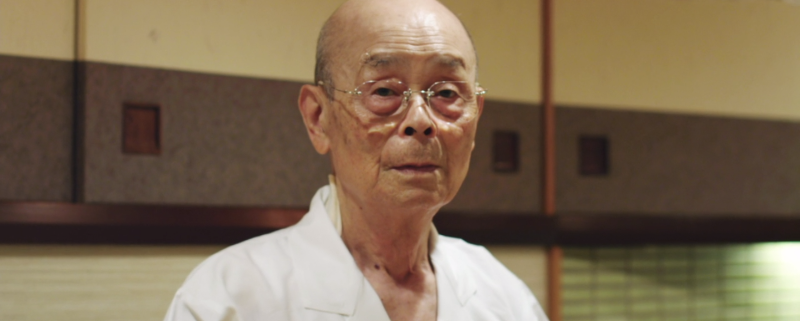Jiro Ono and the Work Ethic of a Shokunin
Every art has their masters—their da Vincis, Mozarts, and DiCaprios—acting as ambassadors to the mainstream waters and setting the bar for brilliance. Their job is to innovate, to inspire, to push the envelope and, ultimately, spark progression and herald the new wave of their craft. Many artistic histories are vibrant and controversial, several legends battling it out years later among modern memory for an unequivocal acceptance as “the greatest”. The story of sushi is one that takes no such tone.
Its history stretches even the capacity of our understanding. Starting as a humble street food like the New York hot dog, sushi eventually rose to upper class status, breaking into America and spreading through Europe, only to become so recognized it was again demoted to conveyor belts and grocery store access. Its global adoption is both so overwhelmingly organic and yet so humble, no one knows who or when the California Roll was even invented. Despite this, sushi has its master.
An ambassador and guardian of its purest form and greatest potential, 89 year old Jiro Ono holds the title—competition at an utter loss. His 3 Michelin Star Sukiyabashi seats ten people. Reservations are mandatory, and only accepted a month in advance. Pricing for twenty pieces starts at ¥30,000 ($245) per person, and increases with market conditions. A meal could last 15 minutes, in that sense rendering it the most expensive restaurant in the world. There are no appetizers or aperitifs on offer—Jiro is a specializing man, and one of our greatest living icons of hard work reaping success.
“We don’t care about money”, Jiro emphatically explains among elated violas in the breathtaking documentary Jiro Dreams of Sushi, “All I want to do is make better sushi. I do the same thing over and over, improving bit by bit. There is always a yearning to achieve more. I’ll continue to climb, trying to reach the top… but no one knows where the top is”.
The militarism shows; its the only thing that is as much a part of his icon status as the sushi itself. Jiro does not do vacations, only leaving the restaurant for funerals and medical emergencies. His steely, aging gaze holds decades of dedication in every glance, a vast majority of patrons saying they are too intimidated to eat in front of him.
His techniques marry subtle innovation with staunch tradition, only the best fish purchased from the reigning champions. Tuna from the tuna expert, shrimp from the shrimp expert, rice from the rice expert. Various ingredients come from a man who’s grandfather was harked as “the god of sea eel”. Gender arrangement at the bar of ten is memorized before the restaurant opens, sushi sizes being made accordingly so everyone finishes at the same time. Upon noticing a left-handed visitor, Jiro will place the next piece on the left side to accommodate, which is wiped clean after each morsel. The twenty pieces are arranged by taste composition like an orchestra first thing in the morning—each hand pressed and gently stroked with soy sauce, placed in front of a visitor like a glistening, breathing supercar or priceless jewel. “Even at my age, after decades of work,” he insists, “I don’t think I have achieved perfection. But I feel ecstatic all day, I love making sushi”.
Despite decades of dedication and a conscious pursuit of perfection, Jiro’s success does indeed lie in his ability to love what he does. It provides the strong foundation for his shokunin philosophy, one that demands ceaseless repetition for a mastery of a craft that is both “spiritual and materialistic”. “Once you’ve decided on your occupation, you must immerse yourself in your work”, he insists, smiling. “You have to fall in love with your work. Never complain about your job. You must dedicate your life to mastering your skill. That’s the secret of success, and the key to being regarded honorably”.
And what of the argument for talent? Of secret ingredients, shortcuts, and masterwork tools?
“The techniques we use are no big secret” Jiro’s eldest son and heir apparent, Yoshikazu, calmly explains, hand-roasting seaweed in the hallway. “It really comes down to making an effort and repeating the same thing every day”.






